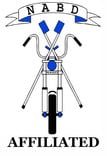Swedish Medical Cards
Posted on
According to the Swedish Riders Organisation (SMC) information in motorcycle helmets can save four lives per year!
This week, 65 000 members of the Swedish Motorcyclist Association, SMC, get a Medical Card kit. The Swedish medical card follows the UKs Ambulance Motorcycle Club Crash Card, the Rider Alert scheme in the US with a CRASH card scheme to be launched in Northern Ireland.
The Swedish Medical Card kit includes four stickers to add on the helmet/s and a card for medical information to put between the shell and padding of the helmet. With this effort, SMC hope to save a few lives per year through fast and adequate rescue in case of an accident.
Motorcyclists are killed and injured in accidents on Swedish Roads every year. The Swedish riders are getting older. Many persons have some kind of allergy or chronic disease. It doesn’t matter if you are going on a ride on your own or with a group – you can’t rely on anyone else to describe your personal medical status. It is much safer if you fill it out on a Medical Card and put it in your helmet.
It is well established that the victim’s chances of survival are greatest if they receive care within a short period of time after a severe injury. Since Sweden is a big country where huge areas is sparsely populated there isn’t always an ambulance in the neighbourhood.
If you suffer from a disease like for example diabetes, there can be a solution to the crash and the rescue team will know what kind of emergency care the victim needs.
According to the Swedish Transport Administration four lives can be saved with fast and adequate rescue. This is the reason for SMC to send out stickers and Medical Cards to 65, 000 members.
The Medical Card Sticker is added on the bottom on the back of the helmet and indicates that the rider has a Medical Card in the helmet, between the shell and padding, with medical information.
Every helmet owner adds information on the medical card. On one side the owner writes: medical history, medical treatment and allergies. On the other side the owner will write name, personal ID number and ICEnumber. All information is translated to English.
”It’s a simple but genius idea that started among ambulance drivers in England. It’s now spreading all over the world”, says Jesper Chrisensen, general secretary of SMC. Both motorcycle riders and ambulance staff in other countries have already testified that the Medical Cards saved lives. If we can save the life of only one rider, SMC has succeeded with this initiative”, continues Christensen.
The initiative from SMC was on Swedish National TV:
Ambulance Motorcycle Club Crash Cards
Crash Cards For Northern Ireland



